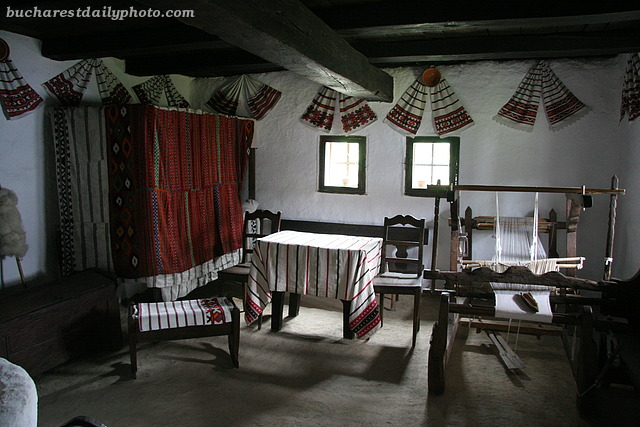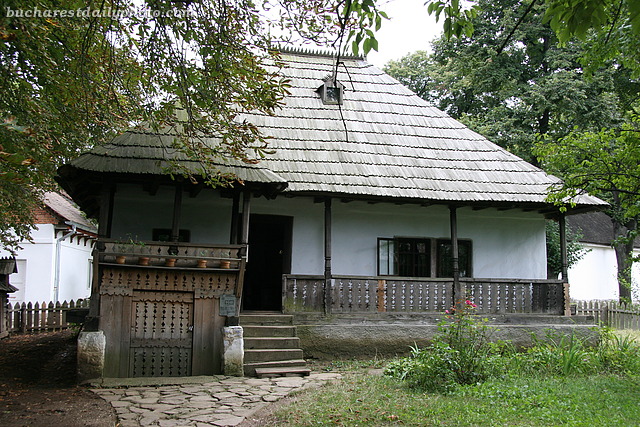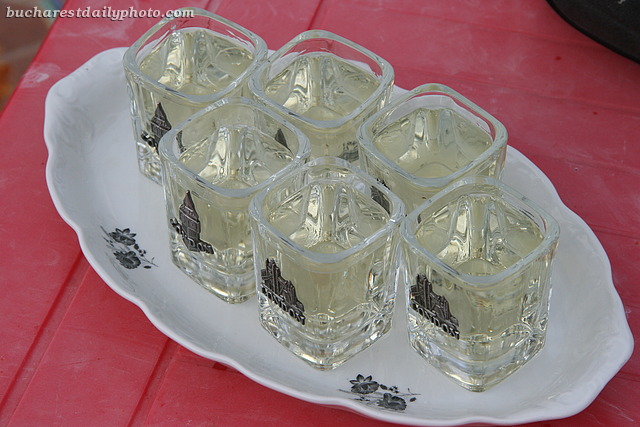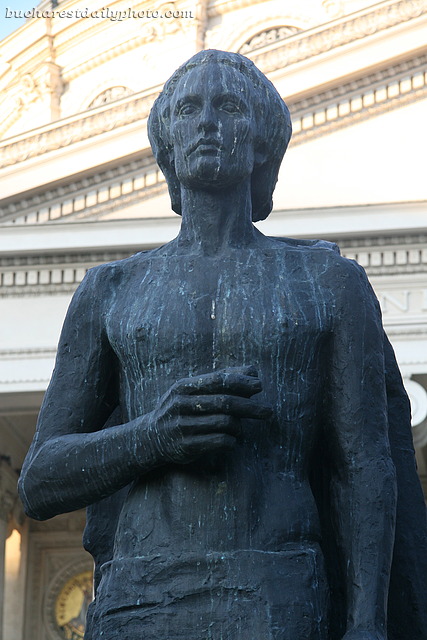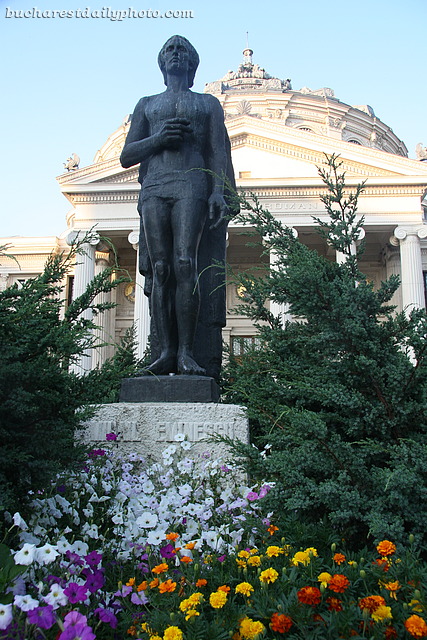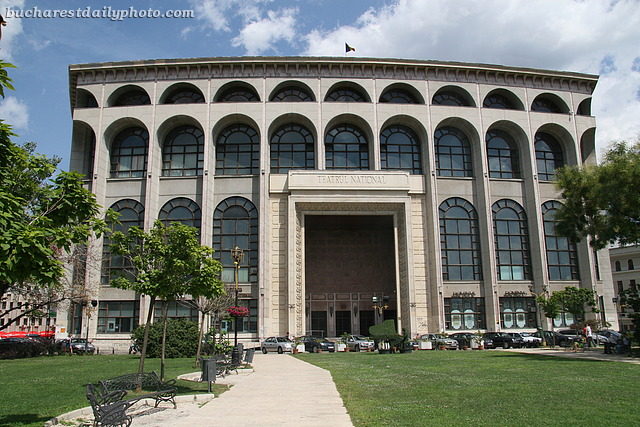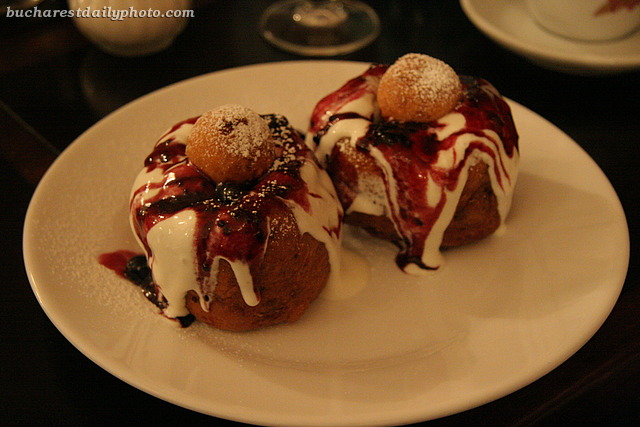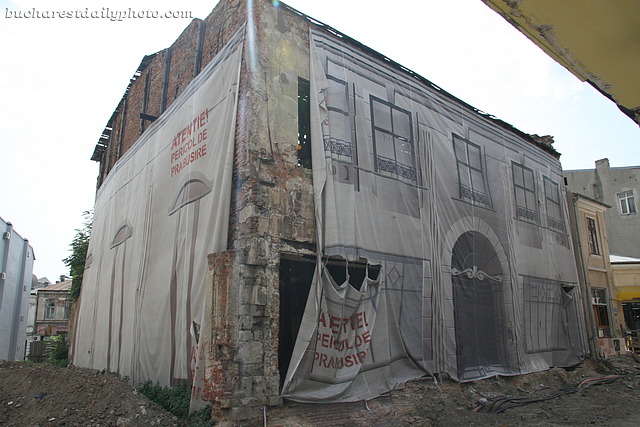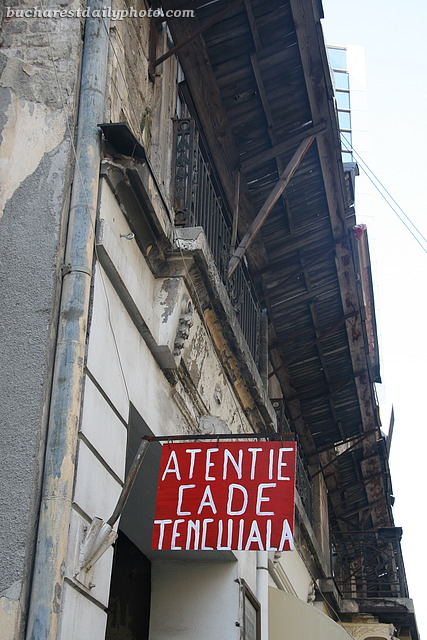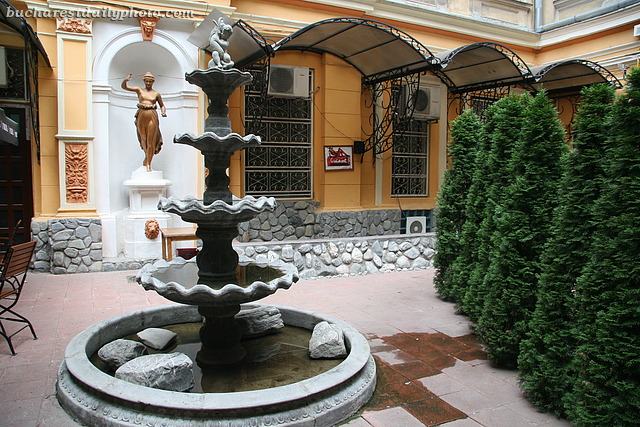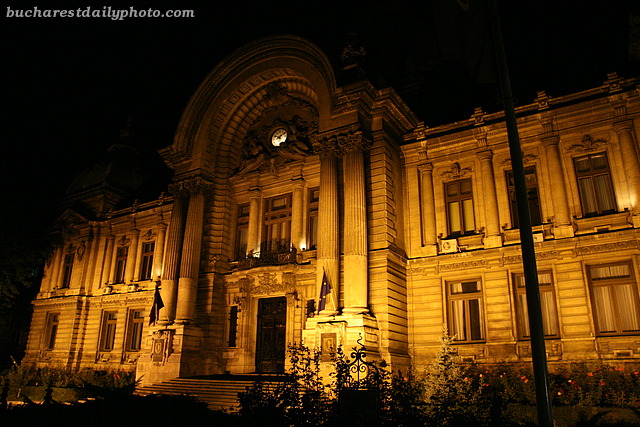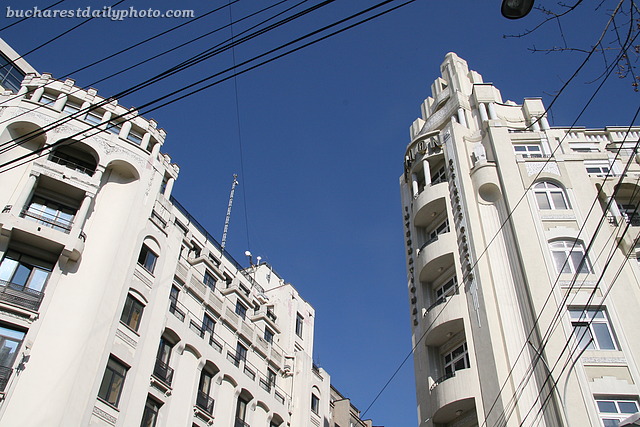Your tour of the Village Museum will not be complete if you don’t visit the interiors of the houses. Some houses are furnished, fully equipped and nicely decorated with folk art and handicrafts.
If you find yourself in Bucharest and don’t plan to visit Romania’s rural areas – and even if you do – you shouldn’t miss this museum which is one of the largest of its kind in Europe. Established in 1936, the museum is a extraordinary open air collection of over 300 wooden houses, windmills and watermills, churches, barns, gates, sheds etc brought from all over Romania in pieces and reassembled on the museum grounds located on the edge of Park Herăstrău. Behind the project from the start was ethnographer Dimitrie Gusti (1880 – 1955) who wanted the museum to mirror as closely as possible the aspects of the rural life. Because of this the museum is organized as a real village, with clusters of houses being linked by winding paths. This makes for a pleasant stroll especially if you find yourself in Bucharest during the summer, when the city is hot and dusty. The oldest houses date as far back as the 18th century. Sometimes the museum hosts crafts fairs, exhibitions and folk music and dance festivals. The house in today’s photograph is from Trăisteni, Prahova, a village about 120 kilometers from Bucharest and it dates from the 19th century.
I was planning on going out today to produce some fresh pictures but the weather here is awful, it’s cold and it’s raining. I had to dig through my collection of photos again, and that’s where I found this photograph. What better to keep one warm on a cold day like today than a shot of ţuică, a traditional Romanian (strong) alcoholic beverage. It’s usually made from plums and similar in taste to Hungarian palinka, just that palinka is twice distilled and therefore stronger. Ţuică is usually consumed before the meal, as an aperitif, to stimulate the appetite and you only get a small amount of it, like a shot, because it is quite strong. It might be hard to find it outside Romania because, to quote wikipedia, “most ţuică is moonshine, prepared using traditional methods, both for private consumption and for sale. Although this is illegal, the government tolerates these practices, and does not consider this bootlegging, due to the nature of the drink. Most ţuică is sold in markets, fairs and even on the road edges, bottled in unlabeled PET bottles. Some communities have acquired production licences and legally produce and bottle ţuică”. Ţuică is present everywhere Romanians gather to celebrate something, at parties, family reunions, weddings etc.
Mihai Eminescu (January 15, 1850 – June 15, 1889) was a late Romantic poet which is considered to be the most influential Romanian poet and has been crowned by many as “Romania’s national poet”. Studying his poems is required in Romanian language schools and I remember getting one of this poems as subject at my Baccalaureate exam (the high school exit exam). His portrait can be seen everywhere in Romania. He is on the 500 lei bill (leu, plural lei, is the Romanian currency) but since that is the highest denomination Romanian bill, the equivalent of 115 euros or $170 you don’t get to see many of those. Many schools and libraries in Romania are named after him and you can see statues of Eminescu everywhere in Romania – like the one in today’s photo, located in front of the Romanian Athenaeum. A few years ago there was a huge scandal when a few young Romanian writers wrote about their idea of Eminescu and against the official idolized image of the poet.
The theatre season has started in Bucharest. I love the theatre, it’s one of my favourite type of performing arts. That’s maybe because my mother used to take me to the theatre every week, when I was little. For me, the sadness of seeing summer departing is a bit alleviated by the start of the theatre season. In today’s photo we have one of the theatre venues of Bucharest, the National Theatre, a stocky building located in December 21st 1989 Square. It was built in 1973 after plans by a group of Romanian architects. The old building of the National Theater was destroyed during the WWII and that site is now occupied by a hotel. Originally the building had a different facade, but in 1984 it was remodeled and got its present massive shape. The theatre has four performance halls.
The National Theater is named after the Romanian playwright and short-story writer Ion Luca Caragiale (1852-1912). His plays made fun of the politics and politicians and of the Romanian society of that day. For example the play that is considered to be his masterpiece, “A Lost Letter”, written in 1884, describes a provincial government election won by a blackmailer. It’s amazing how his works have the same power today as they did a century ago. Not only that, but I saw one of his plays being performed in California and I was surprized to see how the American public of today can relate to his story written in 1880.
Since yesterday I talked about a serious subject I decided that today it is time for something lighter. And sweeter 🙂 Looking through my collection of photos I found this photo of “papanaşi” (a plural, because you are usually served two), one of my favorite Romanian desserts. They are dumplings filled with cottage cheese, fried and served with a dollop of jam and sour cream. You can get them at many restaurants in Bucharest. They are made to order so if you decide to try them, you might have to wait 20 minute until they are ready. It’s a heavy dessert so you must make sure to save enough space. I recommend them with all my heart. Be careful, you might gain weight only by looking at them.
P.S. Writing this post made me want to eat some papanaşi 🙂
A stroll through Bucharest’s Old Town will reveal many warnings like the ones in today’s photographs. A high number of buildings have been neglected for a long while and some structures have reached the point where they are unsafe and dangerous for pedestrians. The first warning, on the building’s cover, reads “Beware! Danger of collapsing” while the second one, the makeshift sign, reads “Beware. Falling masonry”. There is a third version, which I didn’t photograph, in which more care is shown for the cars than pedestrians; that one reads “No parking. Falling masonry” or “Park at your own risk. Falling masonry”. Some of these buildings are still caught up in legal battles between descendants, some are owned by people who don’t have the financial means to repair them; there are also allegations that some of them are owned by persons or companies who wait for their collapse so they can sell the land, usually a prime piece of real estate. One is not allowed to torn down a historical building, but if the building collapses by itself then nobody can stop you from selling the land. It’s sad though that all this architectural heritage is on the verge of being destroyed forever.
To be honest I didn’t know the place in today’s photo existed until a few weeks ago. I must have passed the entrance to this inner courtyard a thousand times but it never crossed my mind to take the few steps through the entrance passageway. But last time I passed this building I stopped to take a picture of the marble plaque that identifies the building as “the house where the poet Mihai Eminescu (who is considered Romania’s greatest poet) worked as an editor to the newspaper The Time between the years 1877 – 1879″ and decided to see what’s behind the narrow passage to the right of the plaque. What I found was this nice inner courtyard, with a fountain and a bronze statue. The building that forms the inner courtyard used to belong to the Dacia Insurance Company and it was built in 1874.
Continuing the nightly stroll on Victory Road, here’s a shot of the Romanian Savings Bank, which I already introduced a few days ago with this post. Designed in eclectic style by the French architect Paul Gottereau and raised between the years 1896-1900, this was the only bank that was allowed to do business during communism when it served as the state savings bank called “CEC” (“Casa de Economii şi Consemnaţiuni” in Romanian) where people used to keep their savings. After the 1990 Revolution, when other banks were allowed to open offices in Romania, the CEC lost many of its customers. The bank was privatized and now it’s called “CEC Bank”. I’ve read in the newspaper that the building is set to become a museum but at this moment is still used as a bank.
Victory Road at night – Part 1
Victory Road at night – Part 2
Victory Road at night – Part 3
I’ve already posted two examples (one and two) of Bucharest’s between the wars architecture. At that time the city was enjoying economic prosperity and new architectural ideas, like modernist and Art-Deco styles, were being promoted. Here are two more examples (in one photo) of Bucharest’s 1930s architecture; and this time the buildings have been renovated. To the left we have Hotel Stănescu (or Negoiu) and to the right Hotel Union. They were built in 1929-1931 after a design by architect Arghir Culina. They served as hotels until 1990 (if I’m not mistaken) and today they function as business centers. They are located at the intersection between Ion Câmpineanu Street and Academiei.
